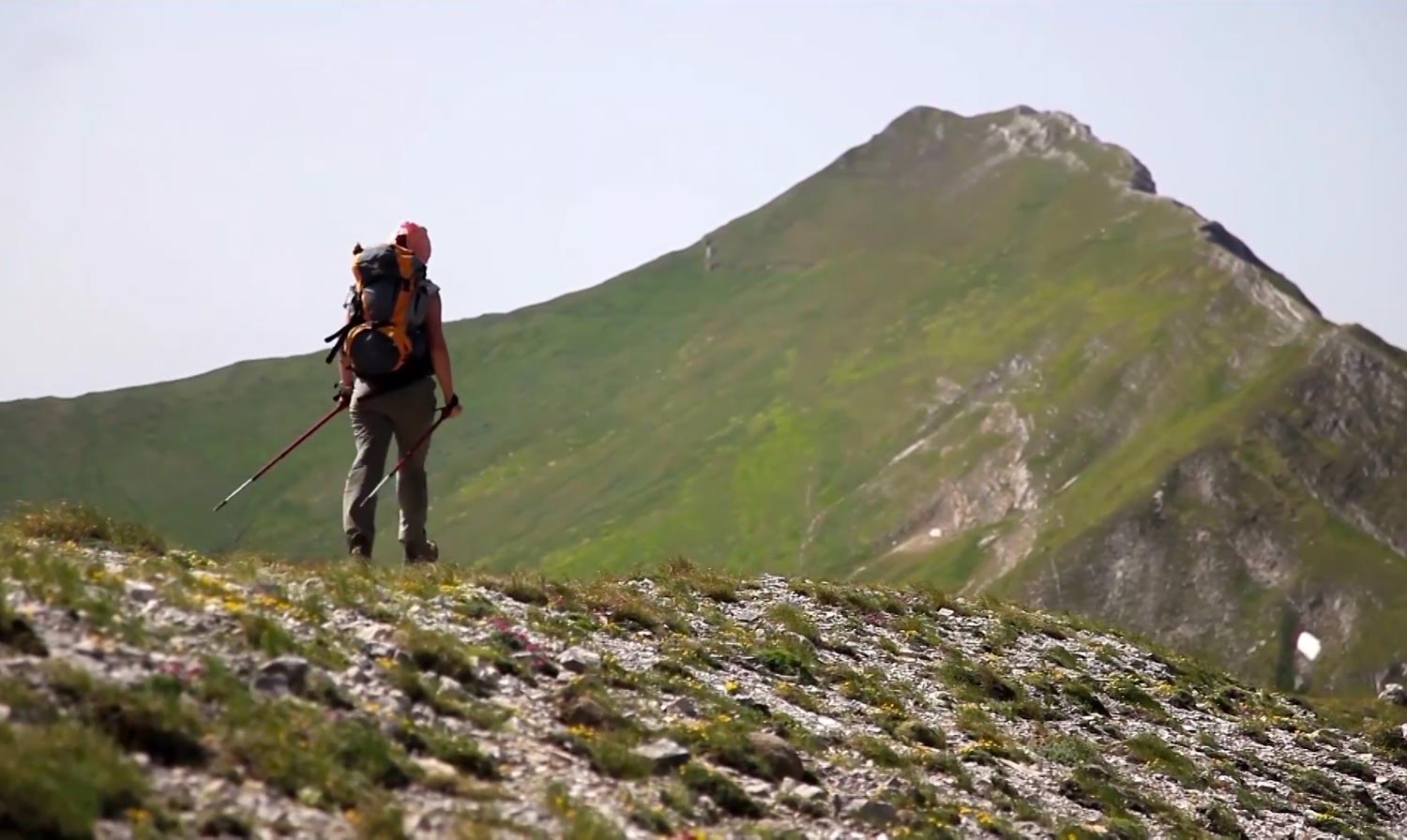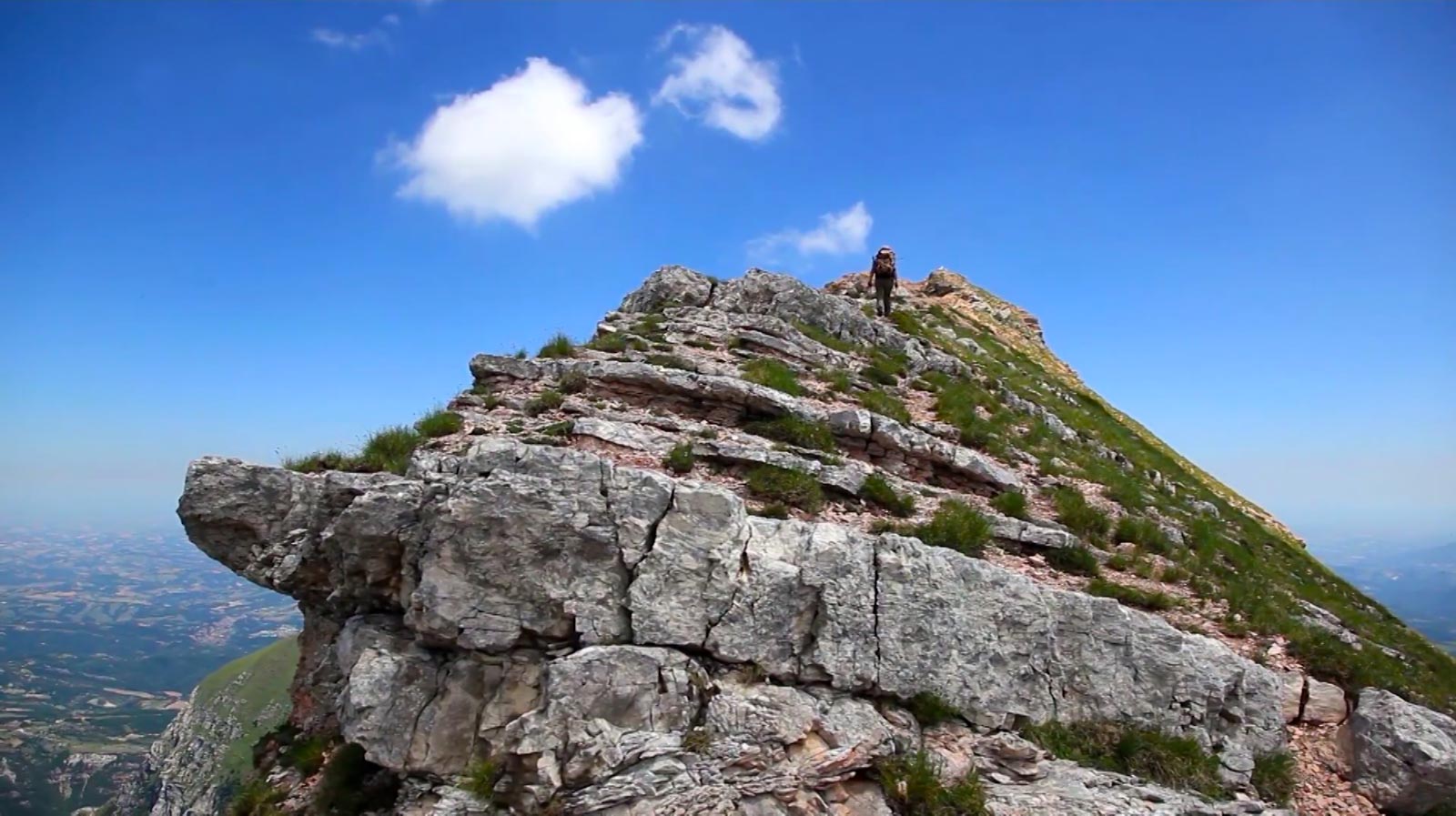Well, the winter is well upon us, bringing with it a prickling desire to throw ourselves into the chilly joys of Italy’s winter arena. We have selected a prime mountain location, an enchanting wonderland of rich natural beauty enclosed in the embrace of the Monti Sibillini.
The Sibillini mountain chain runs along 40 Km of the Umbrian/Marchesian divide, spanning the distance between the Tyrrhenian Sea and the Adriatic and ending at the Monte Vettore (alt. 2476 meters). The area is composed of huge elevated mesas encircled by the towering mountain walls such as the Monte Bove and the Pizzo del Diavolo. Indeed, principle attractions of the region are the waving plains of the Pian Perduto, Pian dei Pantani, Quarto di San Lorenzo and the Piano Grande di Castelluccio prairies. The area is the fruitful result of a thousand-year symbiosis between man and Mother Nature, the former laboring respectfully with a thought to future generations.

At the heart of this fascinating place is the Sibillini National Park, established in 1933 to include an area between the Marches (Ascoli Piceno e Macerata provinces) and Umbria (Perugia province). Exploring the park on foot, it is immediately apparent that the vegetation begins to change, as if by magic as the altitude increases, gradually climbing to 500m. at its summit. Up to around the 1000 m. mark, the terrain consists primarily of oak, Black Hornbeam and Manna Ash with some beeches interspersed. Moving up the mountain, the other species gradually fall away, replaced completely by beech trees.
Above the tree line, the pastures produce several rare and interesting species: the Artemisia (Artemisia petrosa ssp. eriantha) and the Apennine alpine star (Leontopodium alpinum ssp. nivale) as well as the Viola eugeniae, Anemone millefoliata, Gentiana dinarica and Dryas octopetala. Gravelly patches sport clusters of Drypis spinosa ssp. spinosa, Isatis allionii, Linaria alpina, Robertia taraxacoides, etc. Also significant is the presence of Ephedra nebrodensis in Valnerina and of Carex disticha in Pian Grande. This is one of the two existing natural sites in all of Italy.

Characteristic venues
The national park’s natural charms are enhanced by the diffused presence of numerous points of interest of medieval origin. These sites of both historical and architectural interest are situated in strategic positions along the main walkways.
From among the more interesting of these sites, we recommend: Norcia (Pg), Amandola (Civitanova Marche) and Arquata del Tronto (Ap). This approach provides access to the Monte Sibilla where, according to legend, a famous oracle once lived.
Yes, natural beauty abounds, but there is also a great deal to absorb in terms of history, tradition and creative inspiration. The park’s various allures are more strongly felt in some areas than others, with each area offering something unique. There are therefore four “versions” of the park, as detailed below:
- The Floral
Comprises the central zone of the park, the Valle del Fiastrone, the impressive Grotta dei Frati, the ancient and compelling Clareni monastery dating back to the year 1000A.D. Continuing along upstream on the Monte del lago di Fiastra, the jagged peaks of the surrounding mountains are mirrored in the clear waters of the lake. From here, hikers can reach the Valle dell’Acquasanta with its splendid waterfalls and the Grotta dell’Orso, evidence to the fact that bears once flourished in the Sibillini. - The Historical
The region is richly adorned with the castles and family towers which the valley’s inhabitants once erected to defend themselves against repeated Saracen raids. - The Sacred
The village of Norcia, birthplace of Europe’s patron saint S. Benedetto, is the very heart of this section of the park. It is famous for its lovely historical center, the piazza in front of the church dedicated to the saint (14th – 18th century) the 18th-century cathedral among other historical structures. - The Magical
During the Middle Ages, the Sibillini were acknowledged throughout Europe as kingdom of demons, necromancers, fairies and ghosts. Among the numerous legends that have grown up around the area, the most famous is perhaps that of the “Illustrious Prophetess” who lived in a cave in the mountain of the same name. It is believed it was she whose lifeless body was ordered drawn by buffalo through the reddish waters of the “demonic” lake situated high in a cleft of the valley.